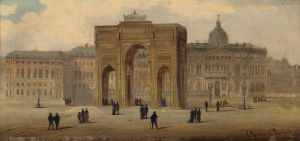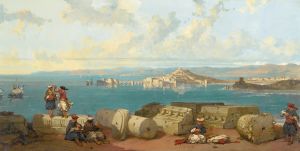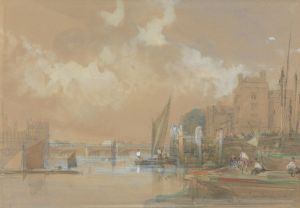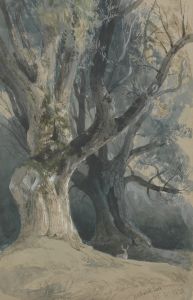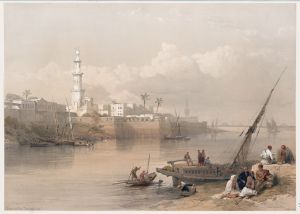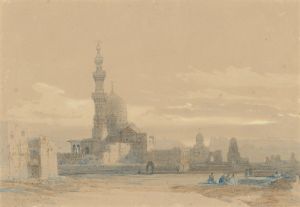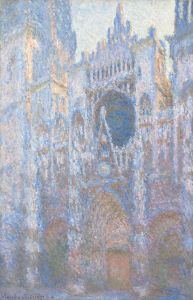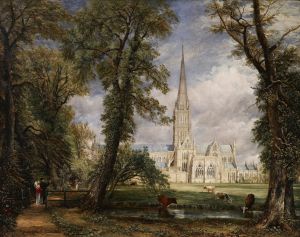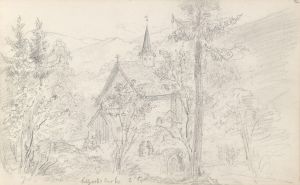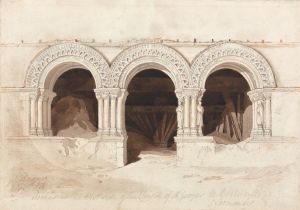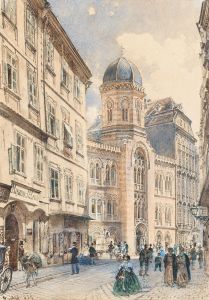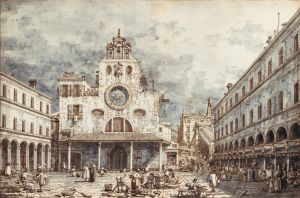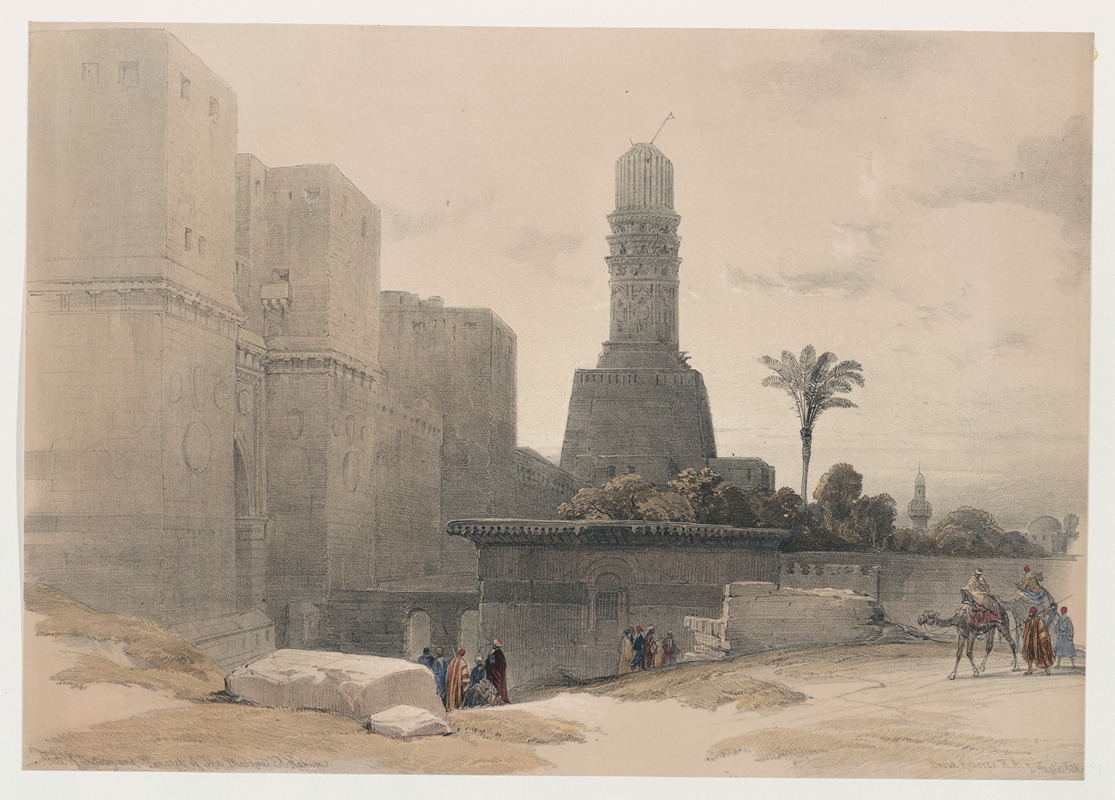
Gate of Victory [Bab an-Nasr], and Mosque of El Hakim.
A hand-painted replica of David Roberts’s masterpiece Gate of Victory [Bab an-Nasr], and Mosque of El Hakim., meticulously crafted by professional artists to capture the true essence of the original. Each piece is created with museum-quality canvas and rare mineral pigments, carefully painted by experienced artists with delicate brushstrokes and rich, layered colors to perfectly recreate the texture of the original artwork. Unlike machine-printed reproductions, this hand-painted version brings the painting to life, infused with the artist’s emotions and skill in every stroke. Whether for personal collection or home decoration, it instantly elevates the artistic atmosphere of any space.
David Roberts' painting Gate of Victory [Bab an-Nasr], and Mosque of El Hakim is a depiction of two significant historical landmarks in Cairo, Egypt. David Roberts (1796–1864) was a Scottish painter renowned for his detailed and accurate lithographs and paintings of architectural and historical sites, particularly in the Middle East and North Africa. His works were based on sketches he made during his travels in the region in the early 19th century.
The Bab al-Nasr, or "Gate of Victory," is one of the three remaining gates of the Fatimid-era walls of Cairo. It was constructed in 1087 during the reign of the Fatimid caliph al-Mustansir Billah. The gate is notable for its massive stone structure and intricate carvings, which include military motifs such as shields and swords, symbolizing strength and protection. Bab al-Nasr served as a northern entrance to the city and played a defensive role in protecting Cairo from invasions.
The Mosque of al-Hakim bi-Amr Allah, commonly referred to as the Mosque of al-Hakim, is another prominent Fatimid monument in Cairo. It was commissioned by Caliph al-Hakim bi-Amr Allah and completed in 1013. The mosque is one of the largest in Cairo and is known for its distinctive architectural features, including its minarets, which are among the oldest surviving examples in Egypt. Over the centuries, the mosque has undergone various restorations and modifications, reflecting its historical and cultural significance.
Roberts' painting captures these two landmarks with remarkable attention to detail, showcasing the architectural grandeur of the Fatimid period. His work provides a visual record of Cairo's historical landscape during the 19th century, offering insights into the city's rich heritage. The painting is part of Roberts' larger body of work, which aimed to document the architectural and cultural treasures of the regions he visited.
Roberts' artistic contributions were widely celebrated during his lifetime, and his works remain valuable resources for understanding the historical and architectural context of the sites he depicted. His paintings and lithographs continue to be appreciated for their historical accuracy and artistic merit.





